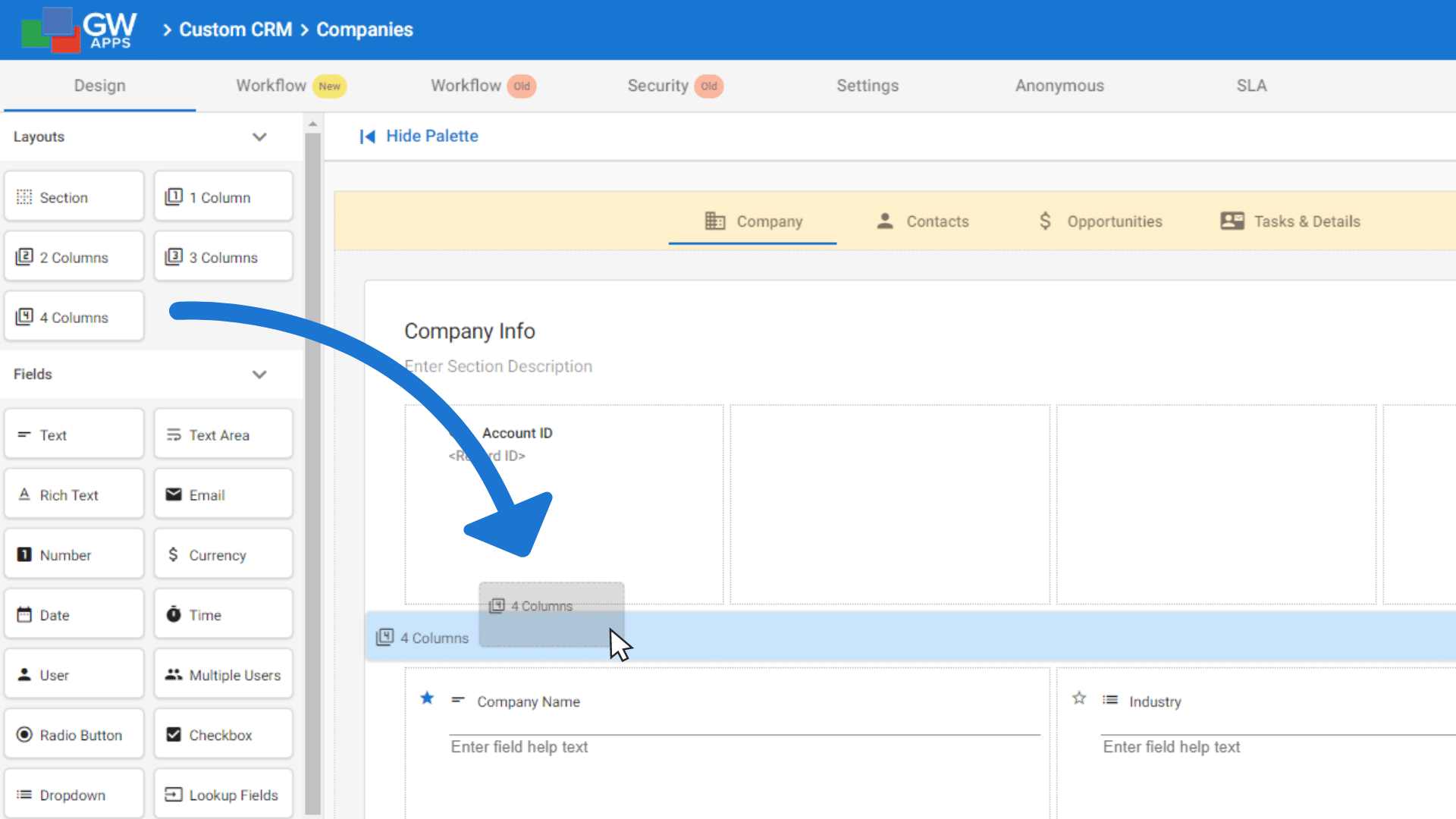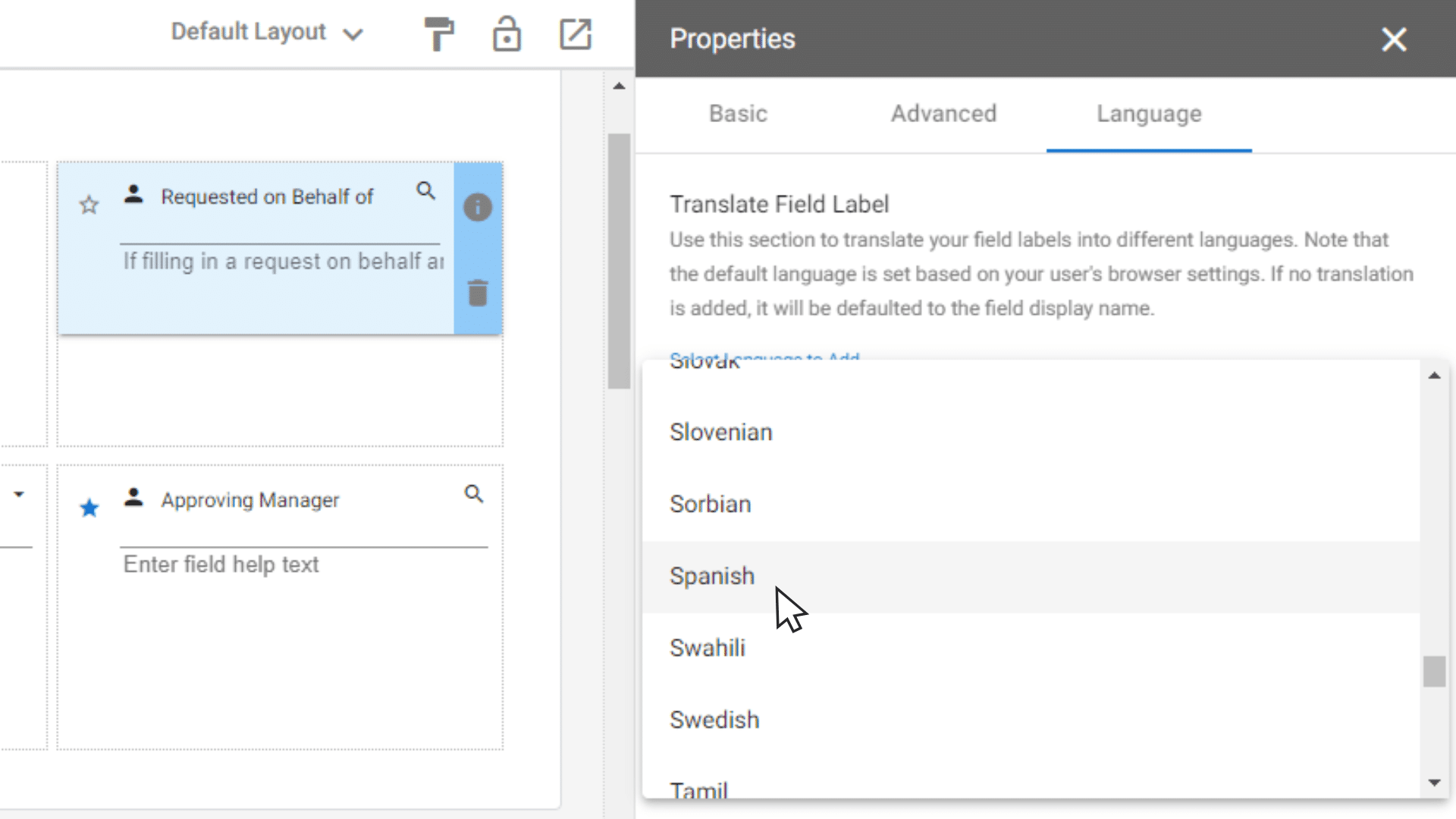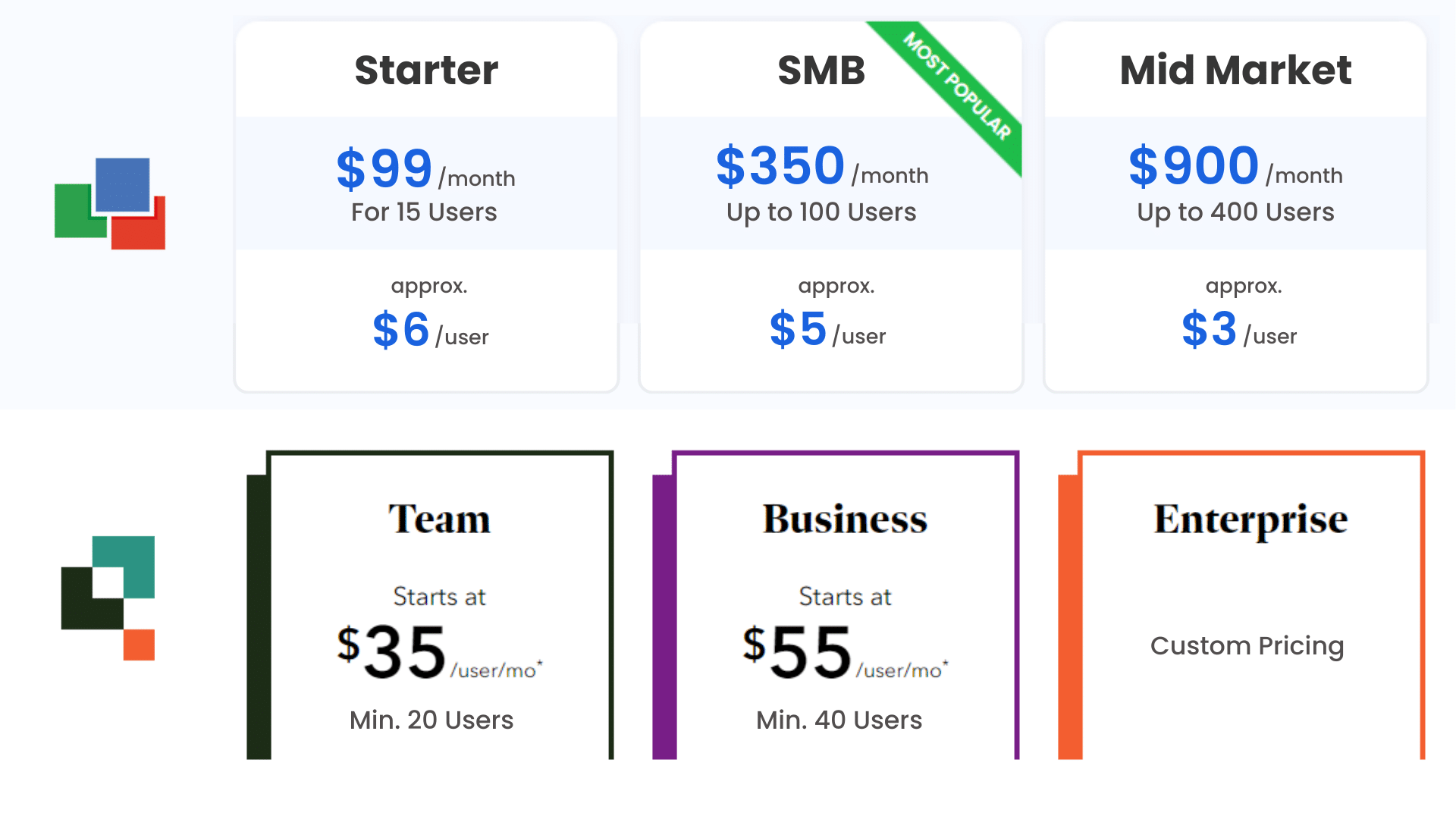GW Apps vs Quickbase
Quickbase and GW Apps take different approaches to building the data model: GW Apps uses forms to build the data structures of applications, while Quickbase uses tables as the foundation of its applications, with forms playing a secondary role. Click to read the full article.
Why customers are choosing GW Apps
Similar capabilities as Quickbase for half the price. More flexibility to learn and onboard the platform.
GW Apps drag-drop-and-configure form builder allows you to simply and rapidly build all the forms your team needs to automate the requests they handle. Quickbase has finally improved their form builder this year, bringing it to par with GW Apps.
Quite a few important features that are built-in to GW Apps must be added to Quickbase via one of their add-on partners, usually at a cost.
GW Apps has out of the box support for multiple languages, so teams from around the world can work together effortlessly.
With Quickbase’s recent improvements, both platforms allow you to build complex custom apps. However, Quickbase has greatly increased their subscription prices in the last 3 years. GW Apps offers great capabilities for 1/3 of the price.
Powerful Forms

All-In-One Solution

Multi-Lingual

Greater ROI

Conclusions

GW Apps offers similar functional capabilities, but with more flexibility in form design and an easier to use design interface. It is also targeted more toward SMB, which is reflected in the pricing, costing less than half the Quickbase price. Additionally, GW Apps offers more direct support to help you build and launch your initial application.

Quickbase has a more traditional, table-based approach and focuses more on larger enterprise clients, which is reflected in their pricing structure. It has powerful functionality, but has limited options for form layout.
Read a detailed comparison between GW Apps and Quickbase:
Ready to Get Started?
Start your free 15-day trial and see how easy it is to connect your employees to the services that they need.
